An Omanu surf life guard is encouraging people to come and learn some surf life-saving skills ahead of the summer beach season.
Two very lucky teenagers were being swept away in a rip at Omanu Beach when they were fortunately spotted by the experienced life guard.
Ian Glover, a life member of the Omanu Surf Life Saving Club happened to glance towards the water from his house, located about 400metres south of the club.
“It was around 5.30pm. I saw the girls in the water and knew they were in the wrong place. They were swimming near guys on boogie boards, so I thought they were all together. But then the boogie boarders left them, so I grabbed my board.”
Instinctively, he knew that the strong rip they were swimming in was going to get the better of them very quickly if he didn’t take action.
“Being an experienced life guard, I could tell it was about to happen. They’d been on the edge of the rip about five minutes but then were quickly swept out.”
His board was handy and he took it straight out and into the waves.
“I ran down the beach, paddled out 70metres and grabbed them. It was over in seconds. My paddle board has handles that life guards use, to give swimmers something to hold onto.”
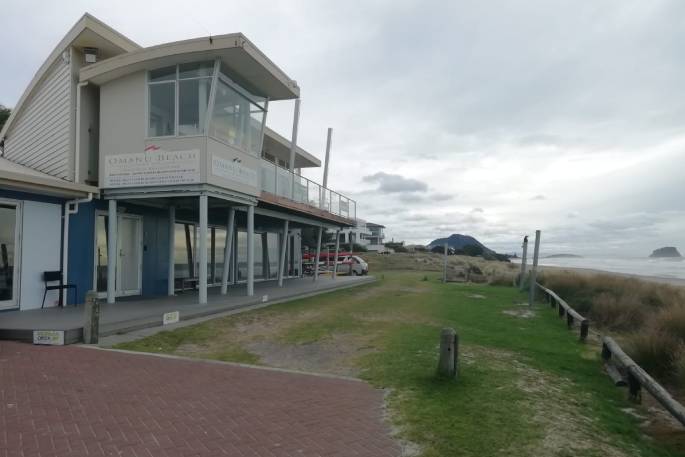 Omanu Beach Surf Life Saving Club. Photo: SunLive.
Omanu Beach Surf Life Saving Club. Photo: SunLive.
Ian says the big thing is to calm stressed swimmers down, provide flotation and get them out of the rip.
“I’ve done a few rescues and people react differently. Some people are seriously embarrassed but the girls were very grateful.
“They told me they knew they needed to go sideways but were on the verge of serious panic. People don’t realise when things get tricky their decision-making goes out the window sometimes.”
Ian, who was one of the first life guards at the Mount Maunganui College pool when it opened in 1969, now works with the local surf clubs and the college to see that good training is in place for athletes as well as lifeguards from the Mount Maunganui, Papamoa and Omanu surf life saving clubs.
Training is available at the pool for anyone to upskill or gain a surf life guard award with theory, practical and CPR training.
 Waihi Beach. Photo: Brook Sabin/Stuff.
Waihi Beach. Photo: Brook Sabin/Stuff.
Waihi Beach incident
Meanwhile, Eastern Region beaches were busy, particularly on Sunday. During one incident, Waihi Beach Lifeguard Services Search and Rescue Squad assisted Fire and Emergency New Zealand and Hato Hone St John with a patient transfer.
It came after a person fell from a cliff, sustaining a head injury and broken tibia and fibula.
They were located at the bottom of the cliff in Anzac Bay, making it difficult for FENZ and Hato Hone St John to transport the patient overland to an ambulance.
Surf lifeguards assisted in the complicated transportation of the patient from their location of injury, into an inflatable rescue boat, and back to shore.
“This is a great example of SLSNZ working alongside other emergency response organisations, and using our specialist rescue skills,” says SLSNZ Eastern Regional Manager Avan Polo.
“Our surf lifeguards are an incredible resource beyond the red and yellow flags.”
Rips keeping surf life guards busy
Northern Region surf lifeguards had a busy weekend, with West Coast Surf Life Saving clubs rescuing several people from rips.
On Saturday, four surf lifeguards from Sunset Beach SLSC rescued five people from a flash rip just south of where the red and yellow flags were set up.
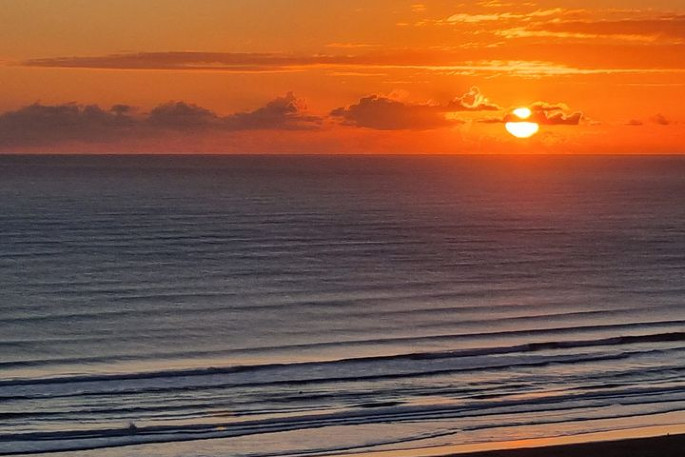 Muriwai. Photo: Geoff Kindred.
Muriwai. Photo: Geoff Kindred.
Two surf lifeguards from Muriwai Volunteer Lifeguard Service also rescued two swimmers from a flash rip using a rescue watercraft.
“Rips are a major hazard in New Zealand, and they can be deadly,” says Surf Life Saving Northern Region General Manager Zac Franich.
“Spotting a rip can be extremely difficult which is why it’s important for people to swim between the red and yellow flags as that is the safest place to be.
“However, if you do find yourself in a rip, try learning the 3Rs Rip Survival Plan: Relax and float, Raise your hand to signal for help, and Ride the rip until it stops.”
South Island Surf Life Saving Clubs
Sunshine and warm weather made for a busy start to the patrol season for Christchurch Surf Life Saving clubs.
Surf lifeguards were officially on duty at Taylors Mistake Surf Life Saving Club (SLSC), Sumner SLSC, South Brighton SLSC, New Brighton SLSC, North Beach SLSC, Waimairi SLSC, Spencer SLSC, and Waikuku SLSC for the first time this season.
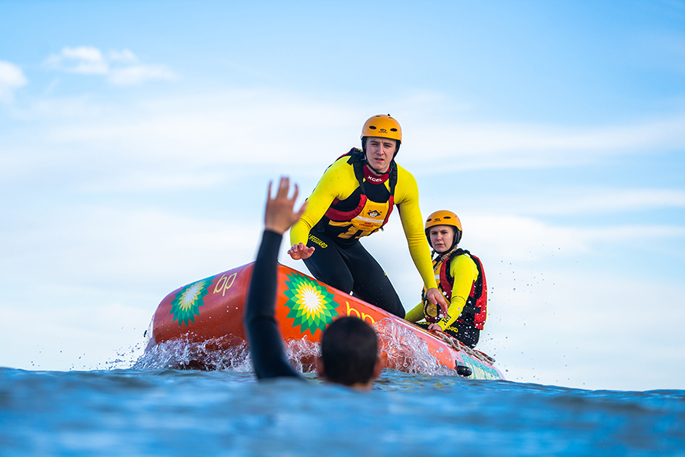 Lifeguards practising a rescue. Photo: SLSNZ.
Lifeguards practising a rescue. Photo: SLSNZ.
Despite hundreds of people heading to South Island beaches, the weekend saw no major incidents, with only three minor first aids.
“It’s great to see surf lifeguards on patrol in Canterbury, and the weather came to the party for the opening weekend with plenty of sunshine for beachgoers to enjoy,” says Surf Life Saving New Zealand (SLSNZ) Southern Regional Manager Stu Bryce.
“Otago SLSC’s were also in full swing with St Kilda SLSC reporting a significant number of people on the beach during Saturday afternoon. However, there were no major incidents which just shows the incredible work our surf lifeguards do to keep everyone safe.”
In the Central Region, Westshore SLSC was the only club on patrol. It was relatively quiet with no incidents to report.
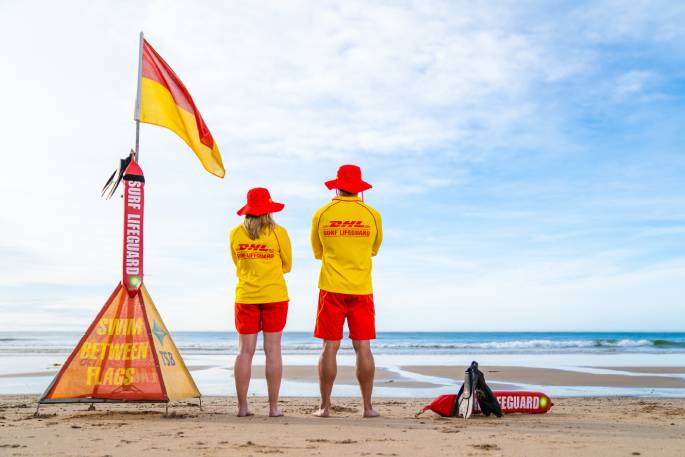 Surf lifeguards. Photo: SLSNZ.
Surf lifeguards. Photo: SLSNZ.
Weather ahead this week
Looking ahead, Metservice is forecasting heavy rain for parts of the South Island this week with strong north-westerly winds, while the North Island enjoys settled beach-friendly weather under a ridge of high pressure.
Northern Region:
|
|
November 11, 2023 |
November 12, 2023 |
|
No. of people rescued |
9 |
0 |
|
No. of people assisted |
2 |
4 |
|
No. of major first aids |
0 |
0 |
|
No. of minor first aids |
0 |
8 |
|
No. of searches |
0 |
0 |
|
No. of preventatives |
99 |
66 |
|
No. of people involved |
1477 |
915 |
|
Peak head count |
830 |
1125 |
|
Hours on patrol |
907 |
915 |
Eastern Region:
|
|
November 11, 2023 |
November 12, 2023 |
|
No. of people rescued |
0 |
0 |
|
No. of people assisted |
0 |
2 |
|
No. of major first aids |
0 |
2 |
|
No. of minor first aids |
0 |
7 |
|
No. of searches |
0 |
1 |
|
No. of preventatives |
22 |
13 |
|
No. of people involved |
828 |
476 |
|
Peak head count |
440 |
760 |
|
Hours on patrol |
275 |
393 |
Central Region:
|
|
November 11, 2023 |
November 12, 2023 |
|
No. of people rescued |
0 |
0 |
|
No. of people assisted |
0 |
0 |
|
No. of major first aids |
0 |
0 |
|
No. of minor first aids |
0 |
0 |
|
No. of searches |
0 |
0 |
|
No. of preventatives |
3 |
0 |
|
No. of people involved |
5 |
0 |
|
Peak head count |
9 |
150 |
|
Hours on patrol |
10 |
49 |
Southern Region:
|
|
November 11, 2023 |
November 12, 2023 |
|
No. of people rescued |
0 |
0 |
|
No. of people assisted |
0 |
0 |
|
No. of major first aids |
0 |
0 |
|
No. of minor first aids |
1 |
2 |
|
No. of searches |
0 |
0 |
|
No. of preventatives |
45 |
45 |
|
No. of people involved |
246 |
264 |
|
Peak head count |
500 |
330 |
|
Hours on patrol |
436 |
519 |
SLSNZ Beach and Coastal Safety Messages
1. Know How To Float
If you don’t know how to float, don’t go into the water. Just being able to float when you are in the water can increase your chance of survival. Floating allows you to calm yourself and keep your airways out of the water. Practice or get some lessons in the pool before you head to the beach.
2. Find The Safest Place To Swim
Check safeswim.org.nz to find a lifeguarded beach, and always swim between the red and yellow flags.
3. If In Doubt, Stay Out
Waves can be bigger than they look, and weather conditions can change quickly. If you feel uncomfortable about getting into the water, stay out.
4. Take Care of Others
Always keep children within arm’s reach in or near the water. Waves can move quickly and unexpectedly and can knock kids off their feet and sweep them away.
5. Know How to Get Help
If someone in the water is in trouble and surf lifeguards are on patrol, let them know. If you can’t see any surf lifeguards, call 111 and ask for police. If you’re in the water and in trouble yourself, signal for help.

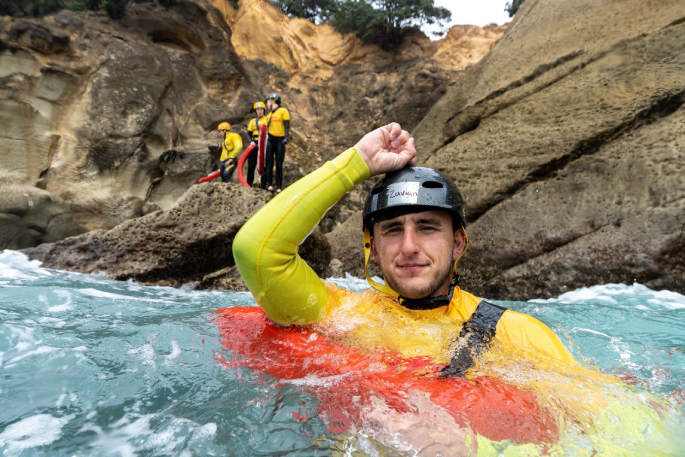

0 comments
Leave a Comment
You must be logged in to make a comment.